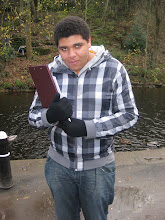 FTV allows the viewer to control the viewpoint and generate new views of a dynamic scene. This means the focus of attention can be controlled by viewers rather than the director or film maker. However this could ruin dramatic suspense caused by not being able to see the whole picture.
FTV allows the viewer to control the viewpoint and generate new views of a dynamic scene. This means the focus of attention can be controlled by viewers rather than the director or film maker. However this could ruin dramatic suspense caused by not being able to see the whole picture. Professor Masayuki Tonimoto, who is a researcher in Japan has been promoting the use of Free Viewpoint Television with his technique of Ray Space Representation. Which is a development of Paul Debevec's 3D image Modelling and rendering techniques.
"This method allows it to render virtual views from arbitrary positions without any geometry information. Furthermore the generated image is photo-realistic."
However this is not the only way to create FTV.
How is it created?
- Firstly cameras are placed around a subject, be it in a studio or a sports stadium.
- The data from each of the cameras is the collated into a single codec, none as MVV (Multiview Video) which is then compressed so that it can be sent to the viewing device.
- The users viewing device then uses the codec to access the relevant views so that new views can interpolated.
- The new footage (which is a mixture of original footage and interpolated images) is then viewed on either a 2D or 3D display.
I believe that this form of viewing television will break into the mainstream, as i don't think it is suitable for viewing or capturing Drama or soaps. However i do see it being used to capture and view live events, such as; Sporting coverage or Music concerts. It could also find it's way into CCTV.


